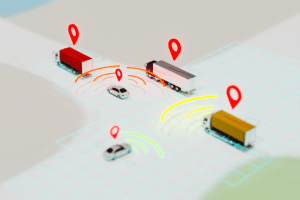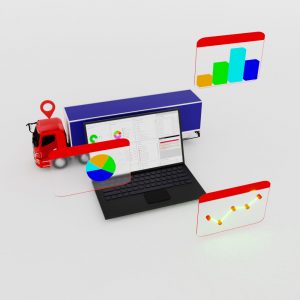Ever wondered what it would be like to have vehicles without drivers on the road? This might not happen right away, but it could be possible in the future. Self-driving technology is a huge technology trend that has great potential. Many companies around the world are working on autonomous vehicle projects, particularly those in the automotive and technology sectors.
News articles that have been released from time to time have kept us updated on the progress of those projects.
The Society of Automotive Engineers (SAE) have classified the six levels of autonomous vehicles based on the degree of automation and extent of human involvement.
- Level 0: No Automation
- Level 1: Driver Assistance
- Level 2: Partial Automation
- Level 3: Conditional Automation
- Level 4: High Automation
- Level 5: Full Automation
Level 5, “Full Automation” refers to the fully driverless level where the vehicle will be able to drive under all conditions. At this level, no human intervention is required at all but this has yet to be achieved. Ensuring safety and compliance to regulations is a key consideration when creating autonomous vehicles.
How do autonomous vehicles interact?
Autonomous vehicles are equipped with multiple sensors which include cameras, lidars and radars. These sensors help autonomous vehicles to take in their surroundings. Machine learning and deep learning are used to process the data obtained from the sensors and the data is also used to train autonomous driving systems. With AI, vehicles will be able to detect objects in their surroundings, read traffic conditions, make judgements and react accordingly. For example, when an object is detected by the sensors, AI will support the vehicle’s ability to decide whether any action needs to be taken such as braking to avoid hitting the object.
By tapping on Vehicle to Vehicle communication, vehicles will also be able to communicate with one another. With this technology, cars can “talk” to one another, hence they will be able to exchange information about road and traffic conditions. For instance, if a car ahead in the lane brakes suddenly, the cars behind will receive signals to slow down even if the car is a few cars ahead of them. This exchange of information between cars on the road could also be helpful in reducing the number of traffic accidents.
Apart from vehicles, vehicles could communicate with transportation infrastructure such as traffic lights and road signs to obtain data on road and traffic conditions. With Vehicle to Infrastructure communication, autonomous vehicles can play a role in supporting Intelligent transport systems (ITS) to bring about greater efficiency to commuters. ITS can tap on the sensors found in autonomous vehicles to capture a wider range of data that can be helpful for analysis and planning purposes. Commuters will also be able to make informed decisions based on the information provided to them.
The information could help them to make adjustments to their daily commute, thus reducing the time spent on commuting. Smooth transportation is one aspect that contributes to building a smart city. Smart cities leverage on data and technology to help cities to make better decisions and improve the living experience of residents. Smart cities, together with connected infrastructure and autonomous vehicles can bring about significant improvements to traffic flow, road safety, efficiency of cities and the quality of life.
The future with autonomous vehicles
According to the Autonomous Vehicle Market report by Research and Markets, the global autonomous vehicle market is expected to exceed $200 billion in value by 2025.
When fully autonomous vehicles become available, we could potentially see a decrease in car ownership numbers. A readily accessible car sharing platform that is supported by a fleet of autonomous vehicles could serve as a new means of transportation. People may no longer feel the need to own cars when this possibility becomes a reality. They could easily hop into a vehicle and alight at the destination without the need to park the car. However, there would be a need to ensure that commuters are able to access a vehicle anytime and anywhere.
Having autonomous vehicles on the road could also benefit the logistics and supply chain sector. There will be reduced traffic accidents due to the absence of human error and vehicles will be kept updated on any potential delays in real time which allows them to take the quickest route to their destination. They can also be driven in the most optimal manner without any idling and harsh braking leading to greater productivity, time and cost savings. One technology that is expected to have a positive impact on the logistics and supply chain sector is the truck platooning technology for autonomous trucks.
We once thought of fully driverless vehicles as a far-fetched idea, but this is no longer the case at this point in time. The day we can see fully autonomous vehicles on our roads may be still quite far away but this is a good example as to how technology is clearly progressing at a rapid pace. The power of data cannot be overlooked and technology has supported the collection of data in many ways. Data is extremely useful in providing insights and largely beneficial for any business. Therefore, it is important to begin your digitalisation journey now by adopting the relevant technology that can help to optimise your business.



